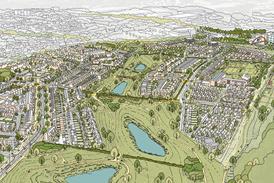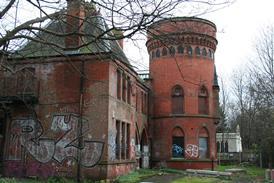- Home
 Crown Estate submits plans for 4,000-home Hertfordshire town masterplanned by Prior + Partners
Crown Estate submits plans for 4,000-home Hertfordshire town masterplanned by Prior + Partners Council looking for new development partner on scrapped transformation of listed Victorian baths
Council looking for new development partner on scrapped transformation of listed Victorian baths Zaha Hadid Architects’ turnover up 8% as Middle East takes over Asia as firm’s biggest market
Zaha Hadid Architects’ turnover up 8% as Middle East takes over Asia as firm’s biggest market What made this project… Elizabeth Mews by Trewhela Williams
What made this project… Elizabeth Mews by Trewhela Williams
- Intelligence for Architects
- Subscribe
- Jobs
- Events

2025 events calendar Explore now 
Keep up to date
Find out more
- Programmes
- CPD
- More from navigation items
Techno Deco: AI and the revival of ornamentation in architecture

AI and digital fabrication are revolutionising architecture, blending tradition with innovation
115 years ago, Charles Rennie Mackintosh’s Glasgow School of Art was completed. A century later, it was voted by the British public in a RIBA survey as their favorite building in the country. It was a magnificent fusion of practicality and exquisite use of ornament and craftsmanship as decorative elements. Tragically, it burnt down six years ago, but its spirit could live on as the blossoming technologies of AI and digital fabrication usher in a new generation of ornamentation in architecture.
The same year the Mack was completed, Adolf Loos wrote Ornament and Crime, marking a key moment in the birth of modernism. This cultural shift, coupled with the industrialisation of construction technology, drove the move to modernism as the dominant force in architecture, leading to the abandonment of expressive, decorative elements in buildings.
…
This content is available to registered users | Already registered?Login here
You are not currently logged in.
To continue reading this story, sign up for free guest access
Existing Subscriber? LOGIN
REGISTER for free access on selected stories and sign up for email alerts. You get:
- Up to the minute architecture news from around the UK
- Breaking, daily and weekly e-newsletters
Subscribe to Building Design and you will benefit from:

- Unlimited news
- Reviews of the latest buildings from all corners of the world
- Technical studies
- Full access to all our online archives
- PLUS you will receive a digital copy of WA100 worth over £45
Subscribe now for unlimited access.


